SMARTGRID EMS RMCS Energy: SIRA’s Solution for Intelligent and Reliable Power
SIRA: Pioneer of SMARTGRID Solutions Since 2010
-
Development of EMS and NANOGRID Systems
-
Dynamic Load Management and Energy Optimization
-
Universal ONGRID and OFFGRID System
-
RMCS Platform Features
-
Secure Telemetry and Browser-Based Control
-
Specialized Applications for Critical Infrastructure
-
Integration Between RMCS and EMS for Maximum Efficiency
SIRA was a pioneer in the field of SMARTGRID energy systems and solutions and, since 2010, has been developing concepts, requirements, and systems capable of addressing the typical energy challenges of developing countries, where the electrical grid is either non-existent or of poor quality, leading to a heavy reliance on diesel generators.

EMS Energy Manager System: Hybrid and Smart Power
In 2011, SIRA introduced its EMS Energy Manager System, a hybrid power solution that addresses the lack of electricity and enables substantial energy savings, with the ability to be remotely controlled via the RMCS Remote Monitoring and Command System.
EMS is a Smart Grid Node system that creates and manages energy using various sources (solar, wind, batteries, diesel generator, and grid power if available), ensuring continuous power supply at the most efficient and economical cost, tailored to user needs.
EMS System Applications: Telecommunications, Industry, and Agriculture
EMS was developed for business, commercial, and civil uses, including telecom, dairy industries, cold chain logistics, gas stations, bank branches, schools, canteens, submersible pumps and agricultural uses, residential homes and condominiums, street lighting, and more.
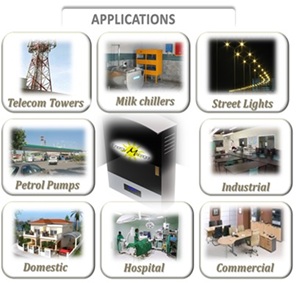
The adoption of EMS, together with energy-saving solutions, leads to a substantial improvement in quality of life, incredible cost reductions, and environmental benefits.
SIRA also designs and provides hybrid solar solutions for large-scale power needs (M / Watt range). Its goal is to drastically reduce diesel generator use and dependency on the electrical grid.
SIRA’s Energy Division aims to develop hybrid energy systems, particularly focused on countries where electricity shortages, load-shedding, and blackouts prevent normal societal development.
The first system was installed in Pakistan to power a Base Transceiver Station (BTS).
The NANOGRID Revolution: Continuity and Energy Savings
Among the many innovations introduced by SIRA, one of the most important was considering electrical loads and energy sources as belonging to the same DOMAIN. System supervision and control extend not only to the sources, including renewables, but also to load management, applying the inverse energy pyramid concept requiring dynamic optimization.
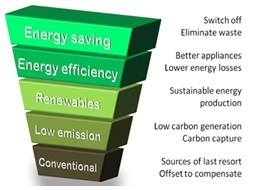
The second major innovation was overcoming the distinction between ONGRID and OFFGRID systems with a single system capable of operating in both modes: the NANOGRID.
The goal is to supply user electrical loads to ensure the highest quality at the lowest cost through a UNIVERSAL solution usable in areas with high-quality grids as well as where grid quality is poor or non-existent.
System Architecture
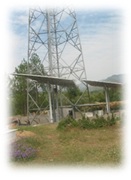 We have surpassed the difference between ONGRID systems, designed for connection to electrical grids, and OFFGRID systems, intended for use in areas without an electrical grid. Our NANOGRID operates seamlessly as either an OFFGRID or ONGRID system, adding voltage stabilization, absolute continuity, and the ability to use any available energy source — electrical grid, diesel generator, solar panels, wind turbines — with intermediate storage and mathematical optimization functions for both production and consumption.
We have surpassed the difference between ONGRID systems, designed for connection to electrical grids, and OFFGRID systems, intended for use in areas without an electrical grid. Our NANOGRID operates seamlessly as either an OFFGRID or ONGRID system, adding voltage stabilization, absolute continuity, and the ability to use any available energy source — electrical grid, diesel generator, solar panels, wind turbines — with intermediate storage and mathematical optimization functions for both production and consumption.
The solution is modular, built according to power objectives, reliability, and energy quality needs, and is also available in a highly mobile version.
It is redundant, highly reliable, and resilient.
Thanks to this architecture and the use of extremely high-reliability power electronics, the SIRA NANOGRID can be used for high-availability applications typical of critical infrastructure power supplies.
Architecture and Benefits of SIRA Energy Solutions
Multiple versions allow use across a broad application market, from the most advanced solutions for the Armed Forces to vertical markets such as telecommunications systems, milk refrigeration, and commercial versions targeting critical infrastructures like small server farms, satellite antennas, hospitals, water pumps, and more.
These specializations are made possible by the computer that regulates and controls all system functions, featuring an energy-specialized SCADA (Supervisory Control And Data Acquisition) system integrated with the EMS (Energy Manager System) energy flow management and optimization system.
INDUSTRIAL INVENTION PATENT UIBM No. 102016000012195
RMCS: Remote Monitoring and Command System of NANOGRID
The RMCS (Remote Monitoring and Command System) platform is fully integrated into the supervision and control system, providing a complete monitoring and remote control solution through a secure bidirectional communication channel, enabling commands to be safely sent to the NANOGRID.
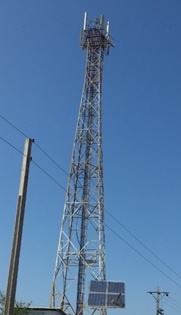
Data is viewable via any web browser on a PC or smartphone.
The system allows inventory monitoring, analysis of electrical parameters, malfunction diagnosis, and remote operator guidance for maintenance. All alarms are presented in Near Real Time on the browser.
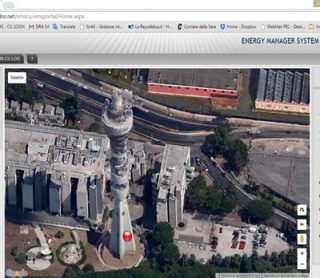
– Bidirectional communication channel
– Commands can be sent to RMCS
– Server located anywhere in the world
– Information disseminated where needed
– Secure communication
The RMCS platform provides a complete remote monitoring and control system for outdoor and indoor BTS stations and any energy plant.
By adding specific hardware components (solar panels, etc.) and upgrading the software, RMCS evolves into EMS without losing previous investments. EMS system design will therefore be based on the real data previously collected with RMCS.

Logs, warnings, and alarms are transmitted via telemetry (SMS, GPRS, or UMTS) to a mobile phone or a remote server, depending on the selected options. When GPRS/UMTS is not available, fault alerts are sent to three different numbers via SMS. If a 2G/3G connection is available, all data is sent to a server with a public IP address.
Using an internet browser, the overall status of the BTS, alerts, faults, and assets can be monitored.
RMCS is connected to the central server through a dual SIM connection, with end-to-end encryption based on AES 256-bit algorithms. It is more than simple telemetry, as commands can be sent to the RMCS from the Network Operations Center (NOC).
RMCS continuously monitors the network from the central server to track operating parameters, record data, and prevent data loss.
Products
